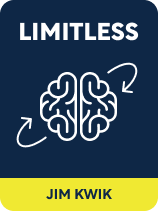

This article is an excerpt from the Shortform book guide to "Limitless" by Jim Kwik. Shortform has the world's best summaries and analyses of books you should be reading.
Like this article? Sign up for a free trial here .
What are some effective active learning methods? How is this style of learning better than rote memorization?
With active learning, you don’t just receive new information. Rather, you actively participate in the learning experience. Active learning methods are not only more effective, but they’re also more enjoyable.
Keep reading to learn about three different active learning methods.
3 Active Learning Methods
Limitless author Jim Kwik notes that many people try to learn new information by rote memorization: repeating something until it sticks. However, rote learning is ineffective because you’re basically trying to bully your brain into accepting the information.
In contrast, in active learning, students actively participate in the learning experience; for example, through in-class discussion or self-chosen projects. Active learning methods are much more effective (and fun!) than rote memorization.
| Counterpoint: Studies have shown that rote learning is extremely effective when studying foundational concepts, such as the alphabet or the Periodic Table. However, the more advanced and complex a topic is, the more rote learning falls short of active learning methods (or meaningful learning, as some call it). |
Here are three active learning methods that Kwik recommends:
Visualization
Instead of just reading words on a page, or hearing them spoken, Kwik recommends engaging your visual memory—imagining the picture that those words paint, rather than the words themselves. That picture will be much easier to recall than the series of words that created it.
To illustrate this point, take a moment right now and think of your bedroom. It’s a fairly safe bet that you came up with a mental image, rather than a collection of words like bed, dresser, nightstand, and so on.
| How Do You Learn? Kwik is describing visual learning, an active learning method in which students benefit from seeing graphical representations of what they’re studying (pictures, charts, maps, and so on). In essence, he’s suggesting that you harness visual learning by creating those graphics yourself, in your own mind. Experts now recognize that visual learning is just one of many different learning styles. For example, the VARK model says that there are four major learning styles (Visual, Auditory, Reading/writing, and Kinesthetic). Another model adds Logical, Social, and Solitary learning styles (and replaces Reading/writing with the more general Linguistic learning style). Consider which learning styles you seem to favor, and try to come up with an equivalent to Kwik’s “visualization” active learning method for those styles. For example, if you’re a kinesthetic learner, you might find it helpful to associate a simple hand movement with a difficult concept—later, when you need to recall the concept, perform that hand movement and it should spring to mind. |
Association
Kwik believes that association is the basis of all learning—in order to learn new information, that information has to be connected to something you already know. Therefore, you should always try to link any new information to something that you already know about.
| Pavlov’s famous dog experiment demonstrates a very basic form of associative learning: Dogs learned to associate food (something they already understood) with a particular sound (which previously had no meaning to them). Once they formed that association, hearing the sound would make them think of food and begin to salivate. Kwik is suggesting that you use a similar method to link concepts in your own mind. For example, you may not know what a derivative is in calculus, but you probably know what graphs and slopes are; therefore, you can understand that a derivative is the slope of a graph. Now, hearing the word “derivative” (which previously had no meaning for you) will bring that concept to mind. |
Emotion
Information is forgettable; however, Kwik argues, feelings are memorable. If you can add emotions to what you’re learning—make it exciting, adventurous, or poignant—then you’ll be much more likely to remember it. That’s why, for example, people frequently come up with humorous acronyms.
In fact, you’ve probably experienced this phenomenon before. To illustrate the point, think back to a time when you got some extraordinary piece of news (either good or bad). You probably remember where you were and what you were doing at the time, even if it was many years ago.
(Shortform note: Memories linked to extraordinary moments are sometimes called flashbulb memories. Flashbulb memories are the reason why, for example, people say that they’ll never forget where they were when they heard that JFK had been shot—or, to use a more recent example, when Kobe Bryant’s helicopter crashed.)

———End of Preview———
Like what you just read? Read the rest of the world's best book summary and analysis of Jim Kwik's "Limitless" at Shortform .
Here's what you'll find in our full Limitless summary :
- Jim Kwik's guide to meta-learning: learning how to learn
- How to quickly and effectively learn about any topic
- How to use your new knowledge to its maximum potential






